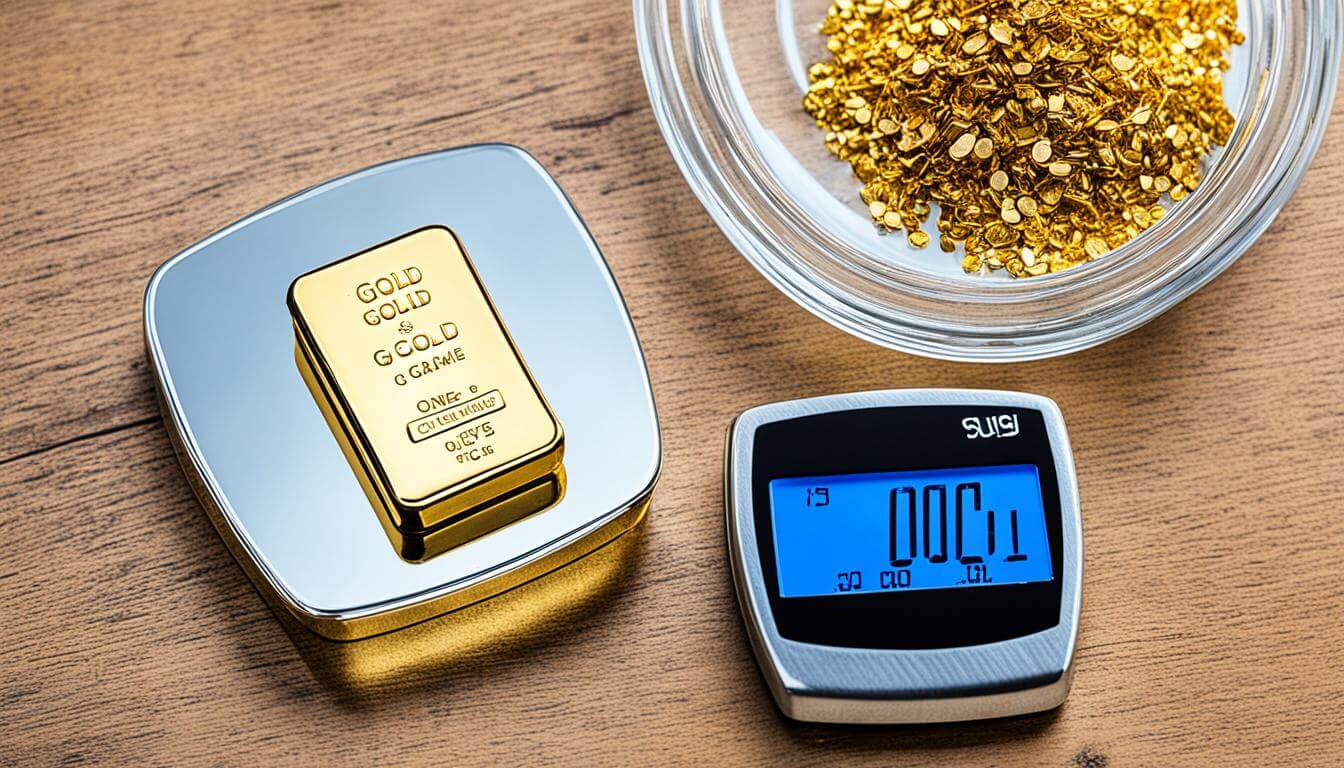When it comes to buying or selling gold, understanding the conversion between 1 ounce gold grams is crucial. In the world of precious metals, the standard measurement for gold is the Troy ounce, which is equivalent to 31.1034768 grams. This is different from the standard (Imperial) ounce used in everyday measurements.
Why is this important? Gold prices are often quoted per troy ounce, so knowing how to convert ounces to grams is essential for accurately calculating prices and comparing different gold products.
In this comprehensive guide, we will discuss the conversion between 1 ounce gold grams, explain why the distinction between troy ounces (ozt) and standard ounces (oz) matters, explore the history of troy ounces for precious metals, and provide you with a clear understanding of this critical aspect of gold measurement.
Stay tuned to learn more about how to convert ounces to grams accurately and why it’s important for any gold investor or enthusiast.
How Many Grams in an Ounce of Gold?
When it comes to measuring gold, the industry standard is the troy ounce. One troy ounce of gold is equivalent to 31.103 grams. This precise conversion allows for accurate weight and value calculations in the precious metals market.
It’s important to note that when discussing ounces in the context of gold, we are typically referring to troy ounces rather than standard ounces. The distinction between the two is crucial in ensuring accurate measurements and valuations.
For those unfamiliar with the troy ounce system, it may seem unfamiliar at first. However, once you understand the conversion factor of 31.103 grams per troy ounce, you’ll be able to confidently navigate the world of gold weight measurement.

Why Does Oz vs Ozt Matter?
The distinction between troy ounces (ozt) and standard ounces (oz) is crucial in the gold industry. Using the wrong measurement can result in a significant discrepancy in gold weights and values. Prices for gold are typically quoted per troy ounce, so it’s important to use the correct measurement when calculating prices and comparing different gold products.
The troy ounce, often denoted as ozt, is the standard measurement used in the precious metals industry, including gold. It is slightly heavier than the standard ounce. One troy ounce is equal to approximately 31.103 grams, while one standard ounce, often denoted as oz, is equivalent to about 28.349 grams.
This difference in weight may seem small, but when multiplied by the number of ounces, it can lead to a significant discrepancy. For example, if a gold bar is quoted at $50 per troy ounce, but you mistakenly use the standard ounce measurement, the actual price per ounce would be higher due to the difference in weight. This can result in costly errors when buying or selling gold.
Furthermore, the use of troy ounces is prevalent in the gold industry for historical and international trade reasons. The troy ounce system has been used for centuries and is recognized globally as the standard measurement for gold and other precious metals. It is important to familiarize yourself with this system to ensure accurate transactions and comparisons.
To illustrate the gold weight discrepancy between ounces and troy ounces, consider the comparison below:
- 1 standard ounce (oz) = approximately 28.349 grams
- 1 troy ounce (ozt) = approximately 31.103 grams

By understanding the difference between ozt and oz, you can ensure that you are using the correct measurement when buying, selling, or evaluating gold. Being aware of the weight discrepancy and using the appropriate measurement can help you make informed decisions and avoid financial losses or inaccuracies in gold transactions.
History of Troy Ounces for Precious Metals
The history of troy ounces dates back to the origins of the precious metals industry. This unique measurement system is believed to have originated in the trade market town of Troyes, France, during the Middle Ages. The town’s name eventually became associated with this weight measurement, giving rise to the term “troy ounce.”
In the early 1400s, England recognized the value of the troy ounce and established it as the official weight for gold and silver. This standardized measurement system helped facilitate international trade and ensure accurate transactions in the precious metals market.
Over time, the troy ounce system spread throughout Europe and became widely accepted. Its usage continued to grow, particularly in the gold industry, where the troy ounce remains the standard measurement for the yellow metal.
The United States officially adopted the troy ounce system with the Coinage Act of 1828, solidifying its place as the preferred measurement for gold and other precious metals in the country. This adoption further solidified the global recognition and use of the troy ounce measurement.
The history of troy ounces is intertwined with the development of the precious metals industry and the need for a standardized weight measurement. Today, it continues to play a crucial role in trade, investment, and valuation of gold and other precious metals worldwide.
Conclusion
Understanding the conversion between troy ounces and grams is essential for anyone buying or selling gold. With one troy ounce being equal to 31.103 grams, this measurement is widely used in the precious metals industry. By having a solid grasp of the correct measurement and conversion, investors can accurately determine the weight and value of their gold holdings, ensuring they make informed decisions when it comes to buying or selling.
The gold measurement guide provided here offers a valuable resource for those navigating the complex world of gold trading. Knowing that prices are often quoted per troy ounce, it is crucial to use the correct measurement when calculating prices and comparing different gold products. This knowledge allows buyers and sellers to confidently engage in gold transactions and stay informed about the true worth of their investments.
Whether you are an experienced investor or just starting out, understanding the significance of troy ounces and their conversion to grams is key to successfully navigating the gold market. Armed with this knowledge, you can make informed decisions based on accurate weight and value measurements, ensuring that you get the most out of your gold investments. So remember, the troy ounce, with its conversion to grams, is the industry-standard for measuring gold, and having a comprehensive understanding of this system is essential for anyone involved in the precious metals trade.
FAQ
How many grams are in an ounce of gold?
Why is the distinction between ounces and troy ounces important in the gold industry?
Using the wrong measurement can result in discrepancies in gold weights and values. Prices are typically quoted per troy ounce, so it’s crucial to use the correct measurement when calculating prices and comparing different gold products.
What is the history behind the Troy ounce measurement?
The troy ounce measurement has a long history in the precious metals industry. It originated in the trade market town of Troyes, France, and was adopted by England as the official weight for gold and silver in the early 1400s. The United States also adopted the troy ounce system with the Coinage Act of 1828.
Why is understanding the conversion between troy ounces and grams important for buying and selling gold?
Understanding the conversion allows investors to accurately determine the weight and value of their gold holdings. By knowing the correct measurement, they can make informed decisions when buying or selling.




